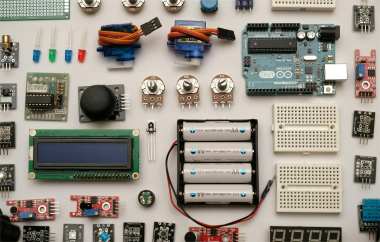
In the design, production, and repair of electronic products, the failure of electronic components is a common and unavoidable issue. Understanding how different components behave when they fail not only helps improve repair efficiency but also enhances overall product reliability. This article explores the failure symptoms, modes, and testing methods of common electronic components.
Catalog
I. Component Durability Ranking
I. Component Durability Ranking
When it comes to durability, not all electronic components are created equal. According to industry research, the general ranking of component resistance to damage is as follows:
· Resistors and inductors
· Capacitors
· Semiconductor devices (such as diodes, transistors, MOSFETs, and integrated circuits)
This means that under the same working conditions, semiconductor devices are more prone to failure. Therefore, when troubleshooting, it's best to check these semiconductor components first.
II. Types of Damage
Electronic components usually fail in three main ways: overvoltage damage, overcurrent damage, and mechanical damage.
Overvoltage damage—caused by voltage spikes or lightning surges—can lead to internal breakdown. In such cases, the component may still look fine from the outside, but its parameters will have deviated drastically, making it nonfunctional.
Overcurrent damage often comes with overheating. Continuous high current raises the component's temperature, leading to cracks, discoloration, or even complete burnout. In severe cases, the surrounding circuit board may also turn yellow or black due to heat.
III. Simple Testing Methods
In real-world maintenance, many components may appear visually intact but still suffer from internal faults. In these cases, a digital multimeter can be used to perform basic tests and determine their condition.
· Resistor: Measure its resistance with a multimeter to see if it matches the rated value.
· Diode: Use the diode mode on a digital multimeter to test the PN junction’s voltage drop. Compare it with a good diode of the same type. A normal reading is typically 0.5–0.7V for silicon diodes or 0.2–0.3V for germanium ones. If the reading is 0 or infinite, it’s likely shorted or open.
· Transistor: Use the diode test mode to check the voltage drops between the base, collector, and emitter. Any abnormal readings indicate damage.
· MOSFET: First, test the internal diode for normal conduction, then check between the gate-source (GS) and gate-drain (GD) for short circuits.
· Capacitor:
· Non-polarized capacitors: Common failures include short circuits or a significant drop in capacitance.
· Electrolytic capacitors: Typical issues include increased leakage current, reduced capacitance, or open circuits. Use the capacitance range on the multimeter to verify its value.
· Inductor: Common faults include coil breakage or solder joint detachment. You can perform a continuity test to make a quick judgment.
· IC Chips: Integrated circuits are complex and can fail completely or become thermally unstable. For complete failures, compare each pin's forward and reverse resistance to ground and look for abnormal readings. For thermal instability, you can use a cooling method (like applying alcohol for local cooling) to see if the fault delays or disappears—if so, the IC is likely the problem.
Using these simple tests can help identify faulty components efficiently and provide a clear basis for further repairs.
IV. Conclusion
In short, electronic component failure is inevitable during a product's life cycle. Understanding the failure signs and testing methods for various components not only boosts repair efficiency but also strengthens product reliability. In practice, technicians should choose suitable diagnostic methods based on component characteristics, detect and fix faults promptly, and ensure that electronic products continue to operate reliably.




